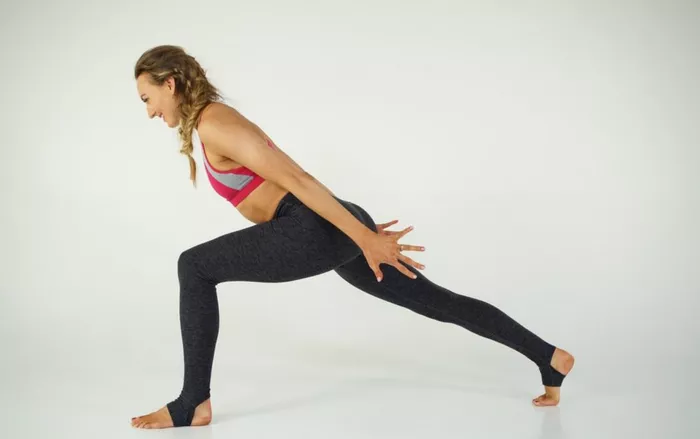As expectant mothers journey through pregnancy, there’s a natural inclination to seek out ways to prepare for labor and childbirth. While traditional methods like Lamaze classes and prenatal exercises are widely recognized, yoga has emerged as a holistic approach to both physical and mental preparation for labor. With its emphasis on breath control, flexibility, and relaxation, yoga offers a myriad of benefits for pregnant women, including strengthening muscles, reducing stress, and fostering a deeper connection between mind and body. In this article, we’ll explore the specific yoga poses that can aid in labor preparation, empowering mothers-to-be to navigate this transformative experience with greater ease and confidence.
The Benefits of Yoga for Labor Preparation
Before delving into the specific poses, it’s essential to understand why yoga is particularly well-suited for preparing for childbirth. Here are some of the key benefits:
1. Strengthening the Pelvic Floor: Yoga poses such as squats, pelvic tilts, and wide-legged forward folds help strengthen the muscles of the pelvic floor, which play a crucial role in supporting the uterus, bladder, and bowel. A strong pelvic floor can facilitate more efficient contractions during labor and may reduce the risk of complications such as pelvic floor dysfunction postpartum.
2. Improving Flexibility: As the body undergoes numerous changes during pregnancy, maintaining flexibility is essential for easing discomfort and promoting optimal fetal positioning. Yoga poses that focus on stretching the hips, hamstrings, and lower back can help alleviate tension and increase mobility, potentially reducing the likelihood of prolonged labor or the need for interventions.
3. Promoting Relaxation and Stress Reduction: Pregnancy often brings about a myriad of emotions, including anxiety and fear about labor and childbirth. Yoga incorporates mindful breathing techniques and relaxation exercises that can calm the nervous system, lower cortisol levels, and promote a sense of inner peace. By learning to cultivate a state of relaxation through yoga, expectant mothers can approach labor with greater mental clarity and resilience.
4. Enhancing Mind-Body Awareness: One of the fundamental principles of yoga is the integration of mind, body, and breath. By practicing yoga regularly throughout pregnancy, women develop a heightened awareness of their bodies and learn to trust their innate wisdom. This mind-body connection can be invaluable during labor, enabling women to tune into their instincts and respond intuitively to the sensations of childbirth.
Yoga Poses for Labor Preparation
Now that we’ve explored the benefits of yoga for labor preparation, let’s delve into some specific poses that are particularly beneficial for expectant mothers:
1. Cat-Cow Stretch (Marjaryasana-Bitilasana): This gentle flowing movement helps improve spinal flexibility and alleviates tension in the back and hips. To perform the cat-cow stretch, start on your hands and knees in a tabletop position. Inhale as you arch your back and lift your head and tailbone towards the ceiling (cow pose), then exhale as you round your spine and tuck your chin towards your chest (cat pose). Repeat this sequence several times, syncing your movements with your breath.
2. Squat (Malasana): Squatting is a natural and instinctive position for childbirth, as it helps open the pelvis and encourages optimal fetal positioning. To practice malasana, stand with your feet wider than hip-width apart, toes turned slightly outwards. Lower your hips down towards the ground, keeping your chest lifted and spine long. You can place your hands together at your heart center for balance, or use a prop such as a yoga block for support.
3. Child’s Pose (Balasana): Child’s pose is a restorative posture that gently stretches the back, hips, and thighs while promoting relaxation and introspection. Begin on your hands and knees, then sit back on your heels as you extend your arms forward and lower your forehead towards the mat. Allow your breath to deepen as you surrender into the pose, releasing any tension or resistance with each exhale.
4. Pelvic Tilts: Pelvic tilts are an excellent way to strengthen the muscles of the pelvic floor and improve pelvic alignment in preparation for childbirth. Lie on your back with your knees bent and feet hip-width apart. Inhale to tilt your pelvis towards your belly button, flattening your lower back against the mat. Exhale to tilt your pelvis away from you, arching your lower back slightly. Continue to move through this pelvic tilting motion, coordinating with your breath.
5. Supported Bridge Pose (Setu Bandhasana): Bridge pose helps open the chest, hips, and pelvis while strengthening the back and legs. To practice supported bridge pose, lie on your back with your knees bent and feet flat on the floor. Place a yoga block or bolster under your sacrum for support, allowing your hips to lift towards the ceiling. Keep your arms by your sides or interlace your fingers beneath you, pressing your forearms into the mat for additional stability.
6. Wide-Legged Forward Fold (Prasarita Padottanasana): This standing forward fold stretches the inner thighs and hamstrings while encouraging a sense of surrender and release. Stand with your feet wide apart, toes pointing forward. Inhale to lengthen your spine, then exhale as you hinge at the hips and fold forward, bringing your hands to the mat or a block for support. Allow your head to hang heavy, relaxing the neck and shoulders as you breathe deeply into the stretch.
7. Butterfly Pose (Baddha Konasana): Butterfly pose helps open the hips and pelvis while relieving tension in the groin and inner thighs. Sit on the floor with the soles of your feet together and knees bent out to the sides. Hold onto your ankles or feet, then gently press your knees towards the ground as you lengthen your spine upwards. You can also use props such as yoga blocks or blankets under your knees for support if needed.
Conclusion
Incorporating yoga into your prenatal routine can be immensely beneficial for preparing both physically and mentally for labor and childbirth. By practicing yoga poses that focus on strengthening the pelvic floor, improving flexibility, promoting relaxation, and enhancing mind-body awareness, expectant mothers can cultivate the strength, resilience, and inner calm needed to navigate the transformative journey of childbirth with greater ease and confidence. Remember to listen to your body, honor your limits, and trust in the wisdom of your own intuition as you prepare to welcome your baby into the world.
FAQs:
How can I make labor easier and faster?
Making labor easier and faster involves several strategies, including staying active during pregnancy through exercises like walking and prenatal yoga, practicing relaxation techniques such as deep breathing and visualization, maintaining a healthy diet rich in nutrients and hydration, and staying informed about the labor process to alleviate anxiety. Additionally, working closely with your healthcare provider to develop a birth plan that aligns with your preferences and discussing pain management options can help facilitate a smoother labor experience.
Do yogis give birth easier?
While practicing yoga during pregnancy can offer numerous benefits for both physical and mental preparation for childbirth, it’s important to note that individual experiences may vary. Yoga can help strengthen the pelvic floor muscles, improve flexibility, reduce stress, and promote relaxation, all of which may contribute to a more positive birth experience. However, factors such as the specific yoga practices performed, overall health and fitness level, and individual childbirth preferences can also influence the ease of labor for yogis. It’s advisable for expectant mothers to consult with their healthcare provider and consider a holistic approach to labor preparation that includes yoga alongside other supportive measures.
























